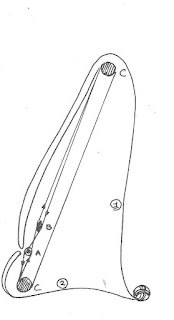The Loom of Kalash
A fundamental part of Kalash religious beliefs and demonstrate that everything, from location, behavior, gender and objects, is separated into the spheres of pure (Onjesta) and impure (Pragata).
{The Kalasha
historical and cultural expert, Khrosh Nawaz, says: “The Loom is pragata,
because a Baira made the first loom for his wife. Baira are the people, who
became very pragata, because they married a too close relative and so had to
convert into Islam”
As
the loom is pragata (impure, belonging to the sphere of women), it is never
placed inside the family houses, but always kept outside
-
When not in use, the posts are lying
or standing somewhere
-
When in use they are leaning towards
a wall or a tree.
The other
tools for the weaving – the finely carved sword, the shed stick with fine teeth
cut along the edge, the heavy “comb” and the hedges are a woman’s treasuries
–like the spindle, they are made by a man and given to the woman as a token of
devotion. The woman using the tools tells who made it, and never forgets. As
the house are very dark, outside is the best place for weaving anyway.
When done in public, the weaving also becomes
a nice social act sometimes, like before the festivals of Chaomos and Joshi,
when new dress parts are being produced; several looms are placed beside each
other
-and
always the woman at work has the company of other women, who admire or
frequently “give a pattern”, insert a border, they know. In this way the
knowledge of patterns is spread.
The
small girls start learning to weave as early as at the age of 5-6
-
They may start by helping behind the
loom, when the warp is set
-
Later they help doing the work
itself.
The
first work of a girl may be a new shu’shut for joshi – rather a simple and
short work.
The
loom consists of two long posts with holes punched out at special intervals for
the different warp lengths needed for the different dress parts.
Through the holes the horizontal warp beams
are inserted supported by stones. The stones can be removed gradually, if the
warp shortens.
In
principle it is round warped loom, but the warp is divided by a stick, which is
taken out after weaving and then the resulting loops can be twisted into fringes.
When
the warp it set, the shed is formed around the wooden aword.
After
the setting of the warp, the sword is pushed upwards, and an extra stick is
inserted into the shed made from the dividing stick. The shed stick is provided
with small teeth, which arrange the warp threads in regular intervals.
After this
leaches are made around one heddle for plain weave (used for dresses, leggings,
trousers, jackets, shawls and head-dresses) and around 4 heddles more for the
twilled weave used for the women’s belts to prevent them from slipping loose. Before
the leaches are made, the sword is inserted to lift up the threads for the
leaches. Then a thread is shot in along the sword and the leaches are lifted up
between the warp threads around the heddle.
The
warp threads are mostly finer than the weft. So the tissue mostly comes out
warp faced (with the warp covering the weft). The weft is wound on a spool
stick, and the weaving can start. For each shoot, the sword is pressed down and
the weft is hammered down with a heavy wooden “fork”
When
weaving the women sits on the ground and the work is done upwards. As the warp
–though divided- is round, it can be pulled down gradually as the work
proceeds. In this way the optiman working position is always there.
Borders are inserted with the fingers: Loose or skeined threads hanging on the front of the loom are inserted and left there after the work is finished.
In
women’s belts and tja’rushdi-shawls, in pants, leggings and (during the last
2-3 years) also in the shu’shut a miniature “Kelim technique” is used –
diagonal designs with small holes, where colours meet. In dresses, pants,
shawls and kupas, the Soumak technique is used
– the weft is alternating with extra coloured threads inserted like stitches
around the warp.
Also
a particular Kalash technique
(Kao’shelaak) is used for horizontal dotted or multi coloured stripes.
It is made by attaching loops of coloured yarn at one side of the warp and
putting the loops into each other alternating up and down around some few warp
threads to the other side of the warp.}1
1 Sperber Glavind, Brigitte, 1990.
Kalash: Dresses, Body Decorations and Textile Techniques. In Proceedings of
the Second International Hindu Kush Cultural Conference, pp 49-51









Δεν υπάρχουν σχόλια:
Δημοσίευση σχολίου